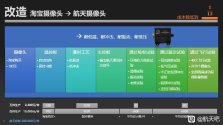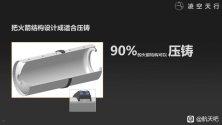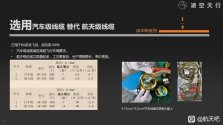Probably no harm in letting some private companies join the fray. But yeah, will be a while before they can escape "China's Anduril" status (to be fair still light years more capable than them already) & pose serious competition to the resources of SOEs.
You are using an out of date browser. It may not display this or other websites correctly.
You should upgrade or use an alternative browser.
You should upgrade or use an alternative browser.
Chinese Hypersonic Developments (HGVs/HCMs)
- Thread starter A.Man
- Start date
In my opinion the advertisement wasn’t for paying customers as there are obviously no domestic market in China (other than PLA) , andI think the fact that they feel the need to advertise using such tasteless, low production value videos is a pretty good indicator of the quality of the company. You don't need to put out such dreck if you are advertising to the PLA.
a large portion of the past advertising material is devoted to cost savings.
“Make rockets like EVs”
Consider the escalating geopolitical tensions surrounding the Taiwan Strait and between China and Japan, it is likely the message was to seeking potential investors while also demonstrate loyalty.
There are unverified rumours that this company has delivered 30+ target missiles to PLA.
Also it patented hypersonic aerodynamic rudder back in 2022.
I too have been waiting for news from 凌空天行 and am intrigued by their approach to spacecraft design and engineering. But there are a few red flags that came to mind after my initial exuberance died down.
This is so mind boggling. They appear to be using modified building cement for high performance heat protection. This has to be really low cost if they can use cement for heat protection.
Firstly, the tone of the ads and how it reminded me of venture capitalist firms (especially those pursuing military or government contracts) in other countries. It is just so easy to stir nationalist passions and use that as a pretext to get people to believe in your brand, invest large sums, or perhaps ignore shortcomings, and that makes me wonder how viable the product is in fact. Maybe its just my cynical attitude toward corporate tactics and messaging in general, but I really got the vibe from that video like they were intending to manipulate their audience in some way.
Secondly, really loud alarms started to go off when I read about using "industrial standard" off the shelf components instead of more expensive parts that met aerospace standards. I mean, there is a reason for standards bodies to exist, and it isn't to be put on a shelf to look pretty. I could also save money by hiring a back-alley surgeon, but probably shouldn't.
Thirdly, and this is the most subjective red flag, their designs are just too good looking. Generally, highly engineered peices of equipment are made by teams of engineers who couldn't care less about appearance, and often have horrible taste. But 凌空天行's engines and spacecraft designs look like they were made by artists. Hats off to them if they have actually managed to marry form and function, but my gut tells me the ratio of showmanship to craftsmanship may be off.
It's too early to tell though, so I will just wait and see. Incidentally, foamed ceramics (not cement) have been put forth for heat sheilding since the early 70's but proved too brittle. I think Lingkong got their inspiration by just going down a checklist of every expensive part that goes into a product and refusing to accept the status quo. That's actually a really good approach, but I am really curious to see how the shielding holds up once more data is made public.
A second rate player with limited self funded projects is mogging the very best the US and Western Europe can achieve with state and military funded programs.
This small private player absolutely is a midget compared to CASC, CASIC and other Chinese state owned and operated departments with likely 100x the funding, talent and access to world leading testing facilities, computing and wind tunnels the US itself doesn't even have, at least to the same performance level.
This company has managed to combine air breathing, powered hypersonic gliders. The US barely managed to make a testing level powered hypersonic cruise missile and barely managed to make testing level gliders. This second rate Chinese team managed to combine both. You can only imagine how far ahead CASC and CASIC are. Unless the US actually has flying saucer level tech, I'd say China should consider getting these private players a slice of the pie as long as they're making these affordable enough to spam like NATO rockets. PLA hypersonic glider cruise missiles will be as common as NATO long range MLRS. Chinese MLRS will be as plentiful as nato unguided artillery shells. China is on the way to accumulating as much military strength as 10x NATO... comfortably. NAFO if they have any realism and do away with all the years of copium will find out.
This small private player absolutely is a midget compared to CASC, CASIC and other Chinese state owned and operated departments with likely 100x the funding, talent and access to world leading testing facilities, computing and wind tunnels the US itself doesn't even have, at least to the same performance level.
This company has managed to combine air breathing, powered hypersonic gliders. The US barely managed to make a testing level powered hypersonic cruise missile and barely managed to make testing level gliders. This second rate Chinese team managed to combine both. You can only imagine how far ahead CASC and CASIC are. Unless the US actually has flying saucer level tech, I'd say China should consider getting these private players a slice of the pie as long as they're making these affordable enough to spam like NATO rockets. PLA hypersonic glider cruise missiles will be as common as NATO long range MLRS. Chinese MLRS will be as plentiful as nato unguided artillery shells. China is on the way to accumulating as much military strength as 10x NATO... comfortably. NAFO if they have any realism and do away with all the years of copium will find out.
The CEP demonstrated looks to be better than Iranian MaRVs. This is China's worst vs Iran's best in a field that is at least 2 leagues above what Iran can do... controlled and maneuverable hypersonic glider, air breathing engine powered hypersonic engine, combined. This ain't sticking some basic fins to ballistic missile re-entry payloads and getting it to do a pre-programmed adjustment with very limited maneuverability.
Yes CASC and CASIC programs from yesterdecade probably already played with this level and today would be unrecognisably ahead of the world but these private players have a place. No one on earth outside China has managed to field hypersonic engines except the US. No one outside China has combined a glider with engine powered hypersonic vehicle.
I'd say that's an achievement, is marketable and has a lot of oil rich customers. The only real question is China's unwillingness to destabilise the middle east and truly run against Israel which invites a lot of attention from Israel's muscle - USA. If they wanted to sell to UAE, Saudi Arabia, Qatar etc, they could charge basically whatever they want. Oil rich nations have purchased Chinese ballistic missiles and even desired nuclear warheads to be kept under Chinese watch and guard but that step obviously was never taken. Still, more than one of those nations have purchased Chinese ballistic missiles for "last resort".
North Korean? Yeah without those Chinese wind tunnels, supercomputers and academies like Harbin Institute of Technology, they wouldn't be able to develop those HGVs.
BTW North Korea has not put forward any engine powered hypersonics at all, let alone manage to combine hypersonic engine with glider.
I too have been waiting for news from 凌空天行 and am intrigued by their approach to spacecraft design and engineering. But there are a few red flags that came to mind after my initial exuberance died down.
Firstly, the tone of the ads and how it reminded me of venture capitalist firms (especially those pursuing military or government contracts) in other countries. It is just so easy to stir nationalist passions and use that as a pretext to get people to believe in your brand, invest large sums, or perhaps ignore shortcomings, and that makes me wonder how viable the product is in fact. Maybe its just my cynical attitude toward corporate tactics and messaging in general, but I really got the vibe from that video like they were intending to manipulate their audience in some way.
Indeed these guys have long been using western styles of self promotion. I think this isn't indication of anything other than the style of their marketing approach and this is kind of revealing not so much of the product but of their position in the totem pole within China i.e. short low down, without much to lose and every bit of PR would bring a net benefit hence using a western blabbermouth way of self promotion.
I suspect part of your reluctance is based on the contrast in behaviour from this private company compared to the usual PLA and SOE method of revelation and close to zero PR outside of hints, parades and foreign government publications.
Secondly, really loud alarms started to go off when I read about using "industrial standard" off the shelf components instead of more expensive parts that met aerospace standards. I mean, there is a reason for standards bodies to exist, and it isn't to be put on a shelf to look pretty. I could also save money by hiring a back-alley surgeon, but probably shouldn't.
I'm pretty confident they are referring to off the shelf components in places where they can apply those. It doesn't mean their products are using 100% or even a majority of off the shelf components. That would be... well, impossible.
Their statement on applying industrial standard off the shelf components doesn't negate the use of plenty of custom developed and aerospace grade components too where required.
Their whole ethos is high tech but also affordability. Something Chinese state organisations probably isn't able to achieve. They could serve as a low tier vs the Chinese state owned and operated high tier. Target or decoy HCMs and HGVs don't need pinpoint CEP like the DF-xx or YJ-xx. Downgraded export HGCMs also dont need that level of quality.
Thirdly, and this is the most subjective red flag, their designs are just too good looking. Generally, highly engineered peices of equipment are made by teams of engineers who couldn't care less about appearance, and often have horrible taste. But 凌空天行's engines and spacecraft designs look like they were made by artists. Hats off to them if they have actually managed to marry form and function, but my gut tells me the ratio of showmanship to craftsmanship may be off.
It's too early to tell though, so I will just wait and see. Incidentally, foamed ceramics (not cement) have been put forth for heat sheilding since the early 70's but proved too brittle. I think Lingkong got their inspiration by just going down a checklist of every expensive part that goes into a product and refusing to accept the status quo. That's actually a really good approach, but I am really curious to see how the shielding holds up once more data is made public.
Foamed ceramics is a class of materials. 1970s foamed ceramics vs those of today would surely be orders of magnitude different.
I also don't think form of products is any indication a company behind the product is partial in any which way.




In addition to using modified cement as insulation material and industrial-grade fasteners, they employed die-cast aluminum for the housing, modified a 180-yuan camera purchased from Taobao, substituted aerospace-grade cables with automotive-grade cables, and replaced explosive separation nuts with electric separation nuts.
I agree completely but bruh, the name.
